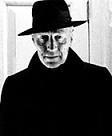(American Mathematical Society Feb. 2008
review of Steven Brams’s Superior Beings:
If They Exist, How Would We Know?)
(pdf, 15 megabytes)
"Brams does not attempt to prove or disprove God. He uses elementary ideas from game theory to create situations between a Person (P) and God (Supreme Being, SB) and discusses how each reacts to the other in these model scenarios….
1) P can believe in SB's existence
2) P can not believe in SB's existence
The Supreme Being also has two options:
1) SB can reveal Himself
2) SB can not reveal Himself
Each player also has a primary and secondary goal. For the Person, the primary goal is to have his belief (or non-belief) confirmed by evidence (or lack thereof). The secondary goal is to 'prefer to believe in SB’s existence.' For the Supreme Being, the primary goal is to have P believe in His existence, while the secondary goal is to not reveal Himself. These goals allow us to rank all the outcomes for each player from best (4) to worst (1). We end up with a matrix as follows (the first number in the parentheses represents the SB's ranking for that box; the second number represents P's ranking):

Analogously:
|
Lotteries on Bloomsday, June 16, 2008 |
Pennsylvania (No revelation) |
New York (Revelation) |
|
Mid-day (No belief) |
418
No belief, |
064
Revelation |
|
Evening (Belief) |
709
Belief without |
198
|
The holy image

denoting belief and revelation
may be interpreted as
a black hole or as a
symbol by James Joyce:
|
When? Going to dark bed there was a square round Sinbad the Sailor roc's auk's egg in the night of the bed of all the auks of the rocs of Darkinbad the Brightdayler. Where?
— Ulysses, conclusion of Chapter 17 |


